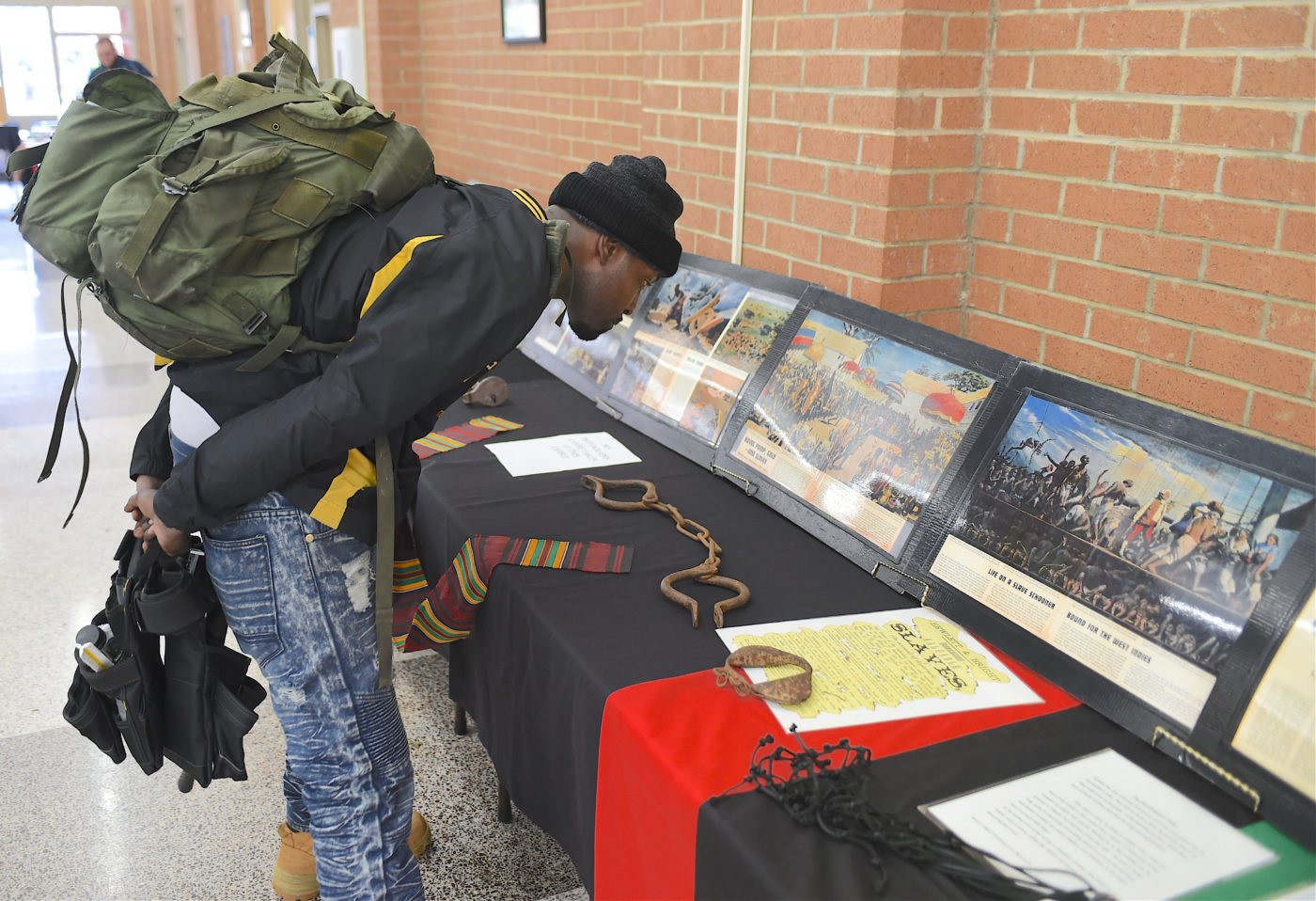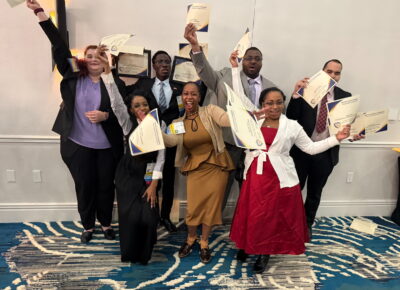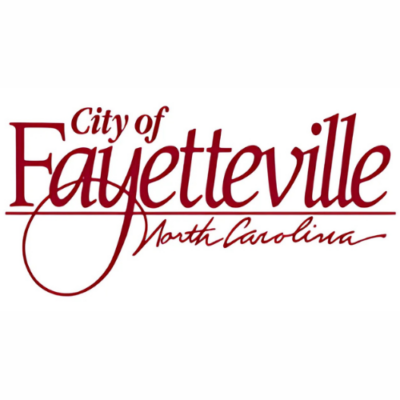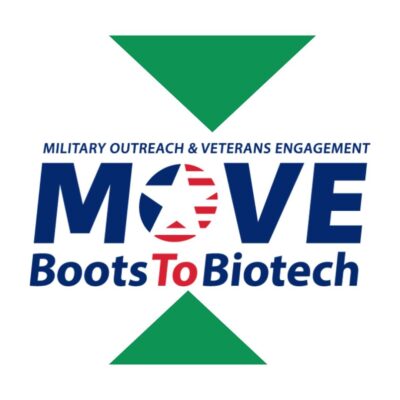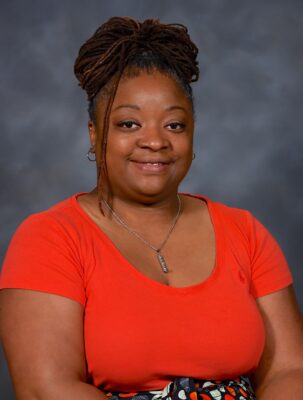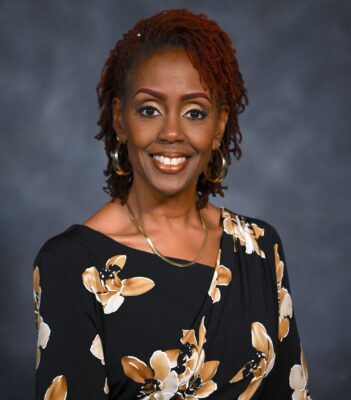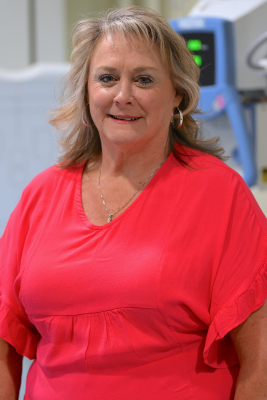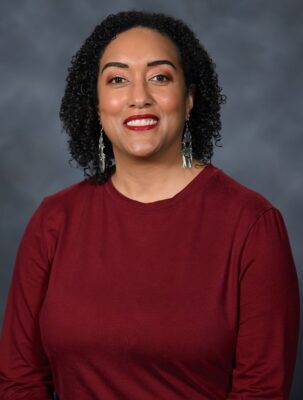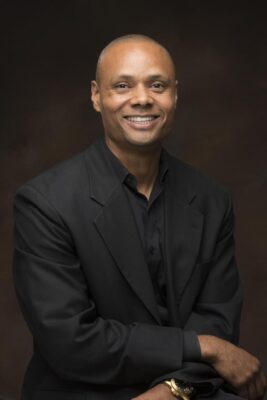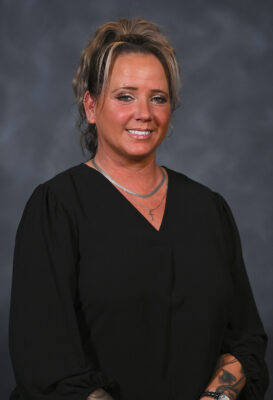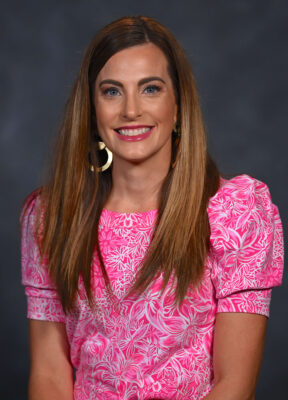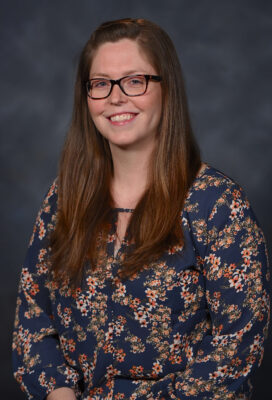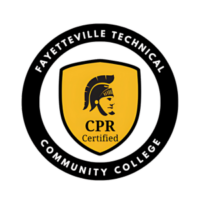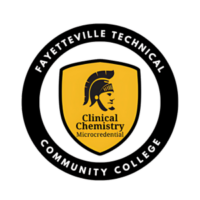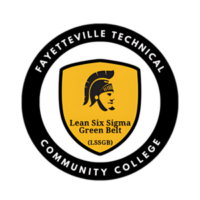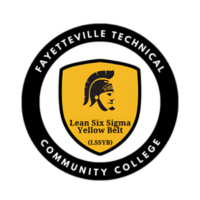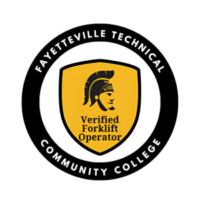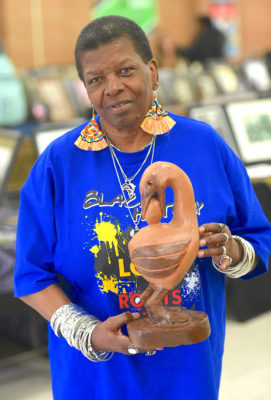
Angela Jennings poses with a “Sankofa” bird, the namesake of her traveling African American museum, which she started in 1995.
Angela Jennings sat in a chair inside the Tony Rand Student Center on FTCC’s Fayetteville campus in early March. Her hands, folded. Her eyes scanned the rows of tables covered with items of the past to the present in the center’s lobby.
There was a Ghanaian spear paired with a vibrant-colored white and brown shield. Dozens of figurines filled a miniature wooden ship from wall to wall. The figurines lied in uncomfortable positions, a depiction of how Africans were treated during slavery on the Transatlantic Slave Trade route from their home countries to the Americas. A black and white picture showed Tuskegee Airmen from the 99th Fighter Squadron (also known as the 99th Pursuit Squadron) who fought in World War II; they were the first flying unit for African Americans.
Jennings owns and curates the “Sankofa African-American Museum on Wheels.” The exhibit displays artifacts, pictures, paintings, articles and more. Visitors can view hundreds of pieces detailing the painful and triumphant history of African Americans from its roots in Africa, to famous inventors and entrepreneurs to more recent historical moments such as the Civil Rights Movement of the 1950s – 1960s to the nation electing its first African-American president and former senator, Barack Obama.
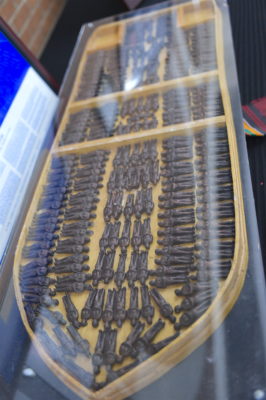
A wooden ship depicting how slaves were packed into uncomfortable positions during the Transatlantic Slave Trade that lasted for centuries.
“I am proud,” Jennings, who calls South Carolina home, said about the pieces. “I am really proud of my people because we’ve made it in spite of.”
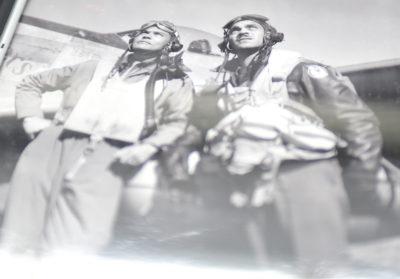
A framed picture of Tuskegee Airmen featured in the Sankofa museum.
The word “Sankofa” comes from the Akan tribe in Ghana, meaning “it is not taboo to fetch what is at risk of being left behind.” Jennings owns a wooden carving of the bird displayed in the exhibit.
“Reach back and fetch,” Jennings added. “But when you go back and fetch, you only turn around, get that wisdom, you bring it back, and give it to the children. Use the wisdom from the past to build the future.”
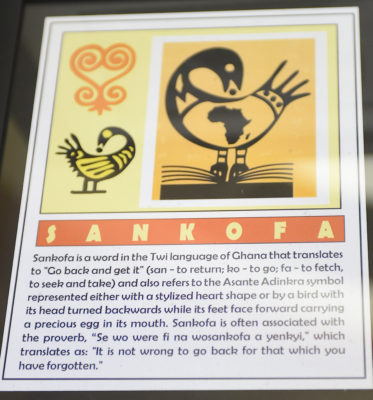
The definition of Sankofa displayed in Angela Jennings’ African American history museum that travels across the nation.
The museum began in 1995. The reasons for creating Sankofa were enough for Jennings to leave her career in retail management after 28 years.
Reaching
The museum birthed from a conversation Jennings had with her nephew. She quizzed the middle school student on famous African Americans featured in her stamp collection. How her nephew faired? He “failed miserably,” Jennings said with a shake of her head. The moment stayed with her nephew through the years. After he graduated high school, he enrolled into African-American studies courses as a college student.
“I decided if I never touched another child, I touched my nephew,” Jennings said. “I decided to put this on the road because I know if a straight-A student didn’t know his history, there are a lot others that don’t know.”
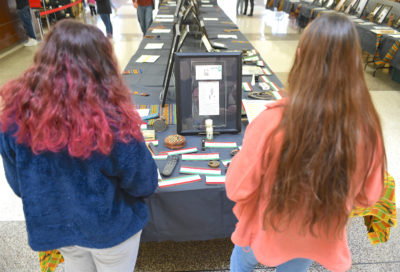
Students look at pieces featured in the “Sankofa African American Museum on Wheels” curated and owned by Angela Jennings. The museum has visited FTCC many times.
Jennings has traveled internationally and visited every state in the nation except Alaska and Hawaii. Her tour takes her to museums, colleges, universities, festivals, churches, and even family reunions. The mileage accrued through the years exhausted three vehicles, specifically vans. Other places Jennings has visited in North Carolina include Rockingham Community College, Catawba Valley Community College, The University of North Carolina at Pembroke and The University of North Carolina at Chapel Hill.
Inside FTCC’s student center that afternoon, Jennings looked back at the long tables, draped in table cloth, holding some of her most precious artifacts. Some of her oldest pieces are framed. One held a tax receipt from 1851. Ten slaves were purchased for more than $50,000 along with roughly 658 acres of land and four horses. Beneath the framed receipt rested a faded copy of an agreement about a slave hired for work outside of the plantation he belonged to.
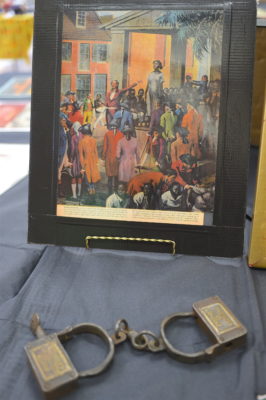
A painting of a slave auction and slave chains featured in the Sankofa traveling museum.
The stories on a neighboring table showed a different part of African American history and culture. The story of Cathay Williams, the first and only woman who disguised herself as a man to serve with the Buffalo soldiers, the all-black Calvary Regiments created after the American Civil War. Nearby lied a laminated list of inventions created by African Americans since the 1800s. Miniature versions of the inventions flanked the list such as the guitar, a golf tee, a lock and the ironing board. The latter was awarded as a patent to Sarah Boone in 1892. She was born in Craven County, North Carolina 60 years prior, according to Biography.com.
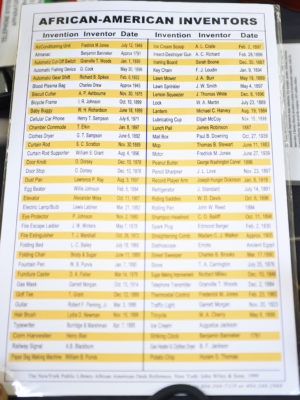
A list of African American inventors and their creations through the years.
Still, Sankofa isn’t complete to Jennings. She’s collected her pieces from auctions, galleries, museums and her travels. The pieces displayed in Sankofa aren’t gifts, she said.
“I must have, at least 2,000 or more pieces, but I can’t put them all out,” she said. “And one exhibit I don’t have exactly like I want is about the Black Panthers. They were misunderstood, but without them, free lunches for kids at school today would not exist.”
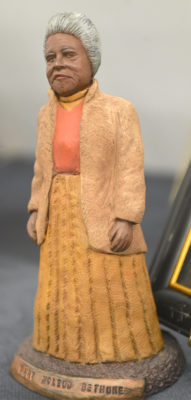
A figurine of the late Mary McLeod Bethune, a prominent educator, activist and humanitarian who lived from 1875 to 1955.
Teaching
The museum’s travels have resulted in “full circle” moments not for itself, but for Jennings. In Greeneville, Tennessee, Jennings talked to a young man started his position at a higher education institution two months prior. Bringing Jennings and the Sankofa museum to the campus was one of his first tasks. He told Jennings he saw the traveling museum as a student attending Tennessee Tech University in Cookeville. Prior, a different student told Jennings she would book the curator for a visit if she began working in higher education, too.
“She now works for a school in Memphis, and she booked me in June of last year,” Jennings said. “It makes me feel good that I’m touching students who are passionate enough about the history and culture. I can’t tell all the history, but I try to give you a little bit of it all.”
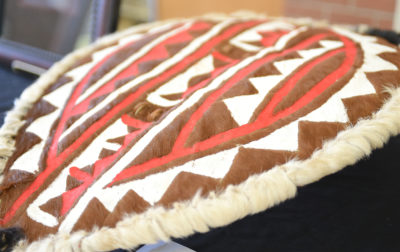
An African shield displayed in the Sankofa museum.
Jennings took a break from talking to look at the vast exhibit she created before her. There were only a few hours left before she would pack up the collection and drive to the next destination. Visitors of all ages – from high school students to senior citizens – walked slowly as they eyed the pieces. Each piece had its own story. Each piece prompted a reaction. An elderly woman gazed at a black and white photograph of late Civil Rights leader Dr. Martin Luther King, Jr. with his wife, Coretta Scott King, and their children.
“I hadn’t seen this picture of them before,” the woman said to herself. She smiled and moved to the next piece.
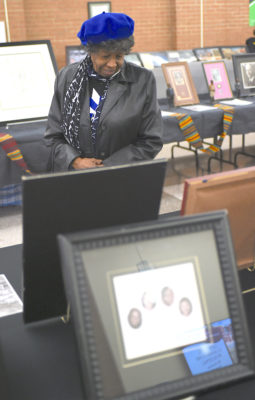
A woman looks at one of the pieces featured in the Sankofa museum on FTCC’s campus in March.
Nearby, a pair of girls turned to each other and whispered. They pointed to a photograph of Civil Rights demonstrators in Birmingham, Alabama. Their clothes, drenched, from an out of frame fire hose aiming high pressure water in their direction. A man on the opposite side of the exhibit stood frozen as he studied a painting with text titled “Royal pomp, gold and slaves.” The varied reactions from museum visitors on the College’s campus reminded Jennings of what she’s heard on her travels through the years.
“’Amazing’ is what I hear,” Jennings said about Sankofa. “That it’s informative, or they didn’t know this and they are really amazed about the inventions.”
Jennings knows when her museum’s final days on the road will be. When one foot of hers refuses to go in front of the other.

